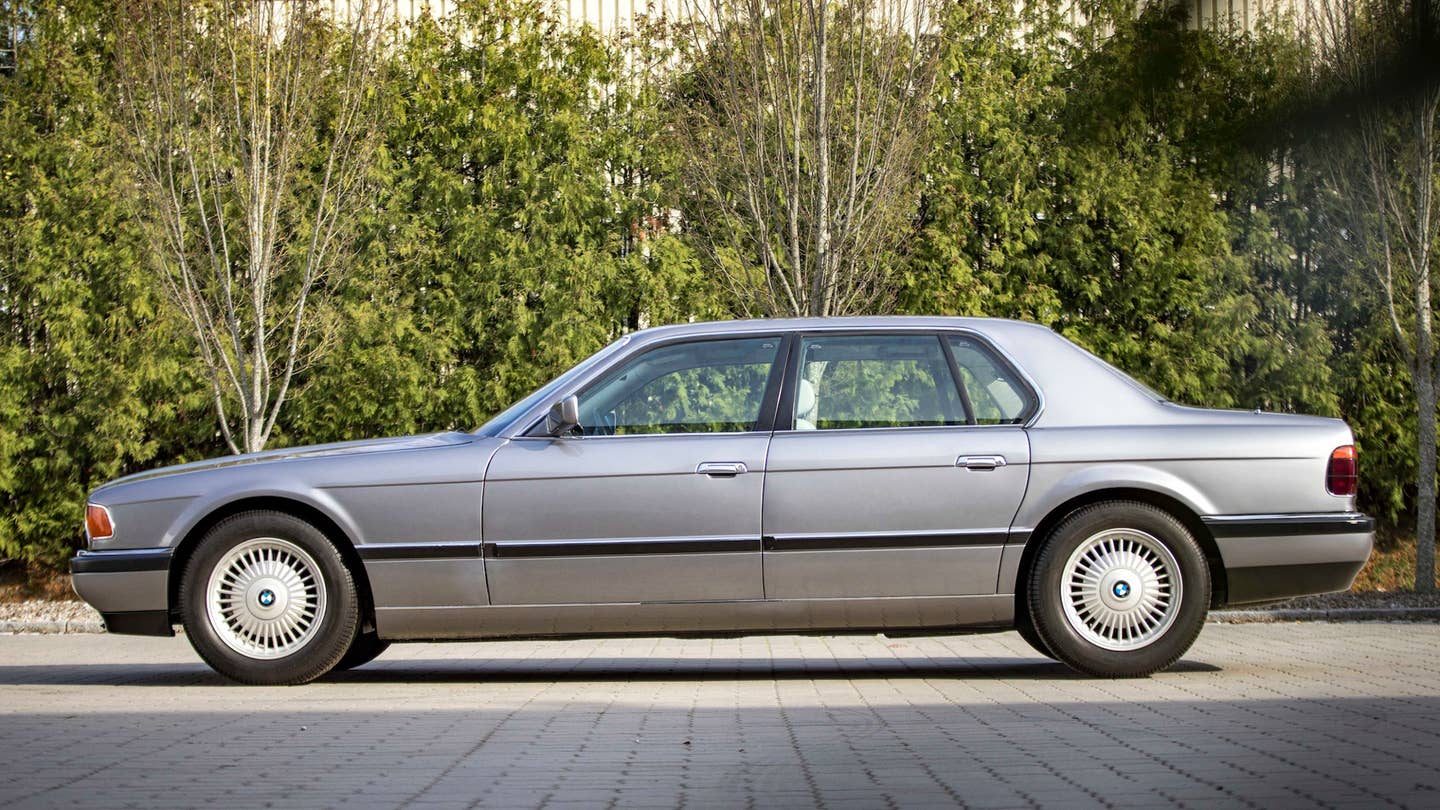This was BMW’s second V16 7 Series prototype but it was kept secret for 34 years.

BMW fans might be looking at this oddball E32-generation 7 Series with a tilted head, like a confused puppy, because even the most diehard of Bimmer lovers were previously unaware of its existence. Those puppy-faced fans knew that BMW made a prototype 7 Series with a V16 engine in 1988, nicknamed “Goldfisch” for its color, but killed the project before it could reach production. However, apparently, BMW didn’t kill the project well enough because the Bavarians built another one and kept it secret. Until now, that is, as BMW recently brought its top-secret second attempt at a V16 7 Series to the 2024 Techno Classica classic car show in Essen, Germany.
The original Goldfisch was a heavily compromised car. Naturally, stuffing a massive 6.7-liter V16 engine into a 7 Series that was never designed to house more than 12 cylinders came with some packaging challenges. To get the V16 to fit, and have a functioning cooling system, the radiator was moved to the trunk and massive air intakes were fitted to the rear fenders. Since it lacked a usable trunk and looked like it had gills (adding merit to its nickname), the Goldfisch project was never greenlit for production.
However, that didn’t stop BMW from taking a second swing at such a car two years later and its second attempt was far better. The 1990 BMW 750iL Goldfisch was a far more cohesive, production-ready vehicle than its predecessor. BMW reconfigured the front end to accommodate a radiator and cooling system, so it no longer needed the trunk-mounted radiator and rear fender intakes. Without the latter, the second V16 7 Series looked like a normal car. In fact, only ultra die-hard BMW nerds would know that it was anything other than a standard old 7 Series if it were spotted on the street.
There are some visual differences between the Goldfisch sequel and the standard long-wheelbase E32-generation 7 Series, though. Its C-pillar, roofline, and Hofmeister kink are slightly different, as is its entire front end. The Goldfisch II has completely different headlights, larger kidney grilles that are wider apart, and a wider, more prominent hood bulge. The front end was modified to fit that massive engine and you can tell.
It was different inside, too, with far more wood trim and a more luxurious-looking dashboard design. Most notable, though, is the absence of a manual gear knob. The first Goldfisch had a five-speed manual transmission paired to its hulking V16 but the sequel ditched the manual for a five-speed automatic. Both cars only powered their rear wheels because they were made long before BMW used “xDrive” on everything.
Speaking of that V16, it made a 348 horsepower, giving the Goldfisch a top speed of 155 mph. That was a healthy amount of power for its time but factoring in its engine size makes it less impressive. For context, the 1990 BMW M5 made 315 horsepower from a 3.5-liter inline-six. That means the Golfisch was only able to muster 33 more ponies with ten more cylinders and 3.2 extra liters of displacement.
That shouldn’t put a dent in its coolness, though. If BMW had the courage to build and sell the second-gen Golfisch in 1990, it would still be among the elite few 16-cylinder production cars of all time, joining the ranks of cars like pre-war Cadillacs and several Bugattis. Such a car likely would have never made much financial sense, as it would have been unbelievably expensive to build but the world would have been a better place with V16 7 Series’ in it.
Got tips? Send ’em to tips@thedrive.com


